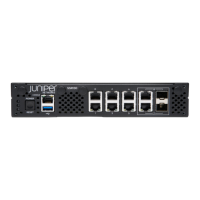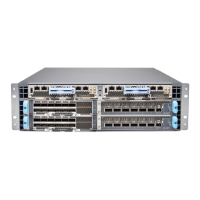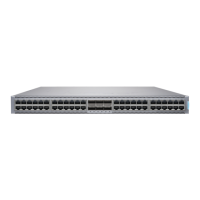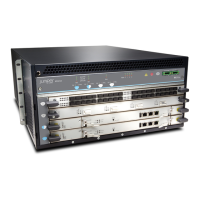Installing a CTP Interface Module, Processor Module, or Clock Module
To install a CTP module:
1. Ground yourself by using an antistatic wrist strap or other device, and connect it to
one of the ESD grounding jacks, if available, or another grounding device.
2. Choose the slot where you want to insert the module.
3. With a Phillips screwdriver, loosen the screws that secure the blank filler panel covering
the empty chassis slot, if present, and remove the filler panel.
4. Remove the module from its antistatic bag, being careful not to touch module
components, pins, leads, or solder connections.
5. Verify that the ejectors are in the open position (facing outward).
6. Guide the module into the chassis by placing it between the guides of the selected
slot and pushing the module until it stops.
The module stops sliding when the ejectors make contact with the chassis.
CAUTION: If you meet strong resistance when attempting to seat the
module using the ejectors, remove it from the chassis, and confirm that
the slot is designed to hold the component. Also, be sure that you have
aligned the left and right edges in the correct matching tracks.
7. Insert the module into the midplane by simultaneously pressing both ejectors inward
and exerting forward pressure on the module. The small red release buttons should
click into place.
8. Tighten the module's captive screws using a Phillips screwdriver.
NOTE: Tighten the captive screws completely before installing an adjacent
module so that proper electromagnetic interference (EMI) gasket
compression occurs. Failure to do this can make it difficult to install
adjacent modules.
9. Go to Cabling a CTP Interface Module.
Related
Documentation
Removing a CTP Interface Module, Processor Module, or Clock Module on page 89•
Removing a CTP Interface Module, Processor Module, or Clock Module
NOTE: We recommend that you issue the slot disable command from the
CLI before removing a line module.
89Copyright © 2017, Juniper Networks, Inc.
Chapter 12: Installing Modules

